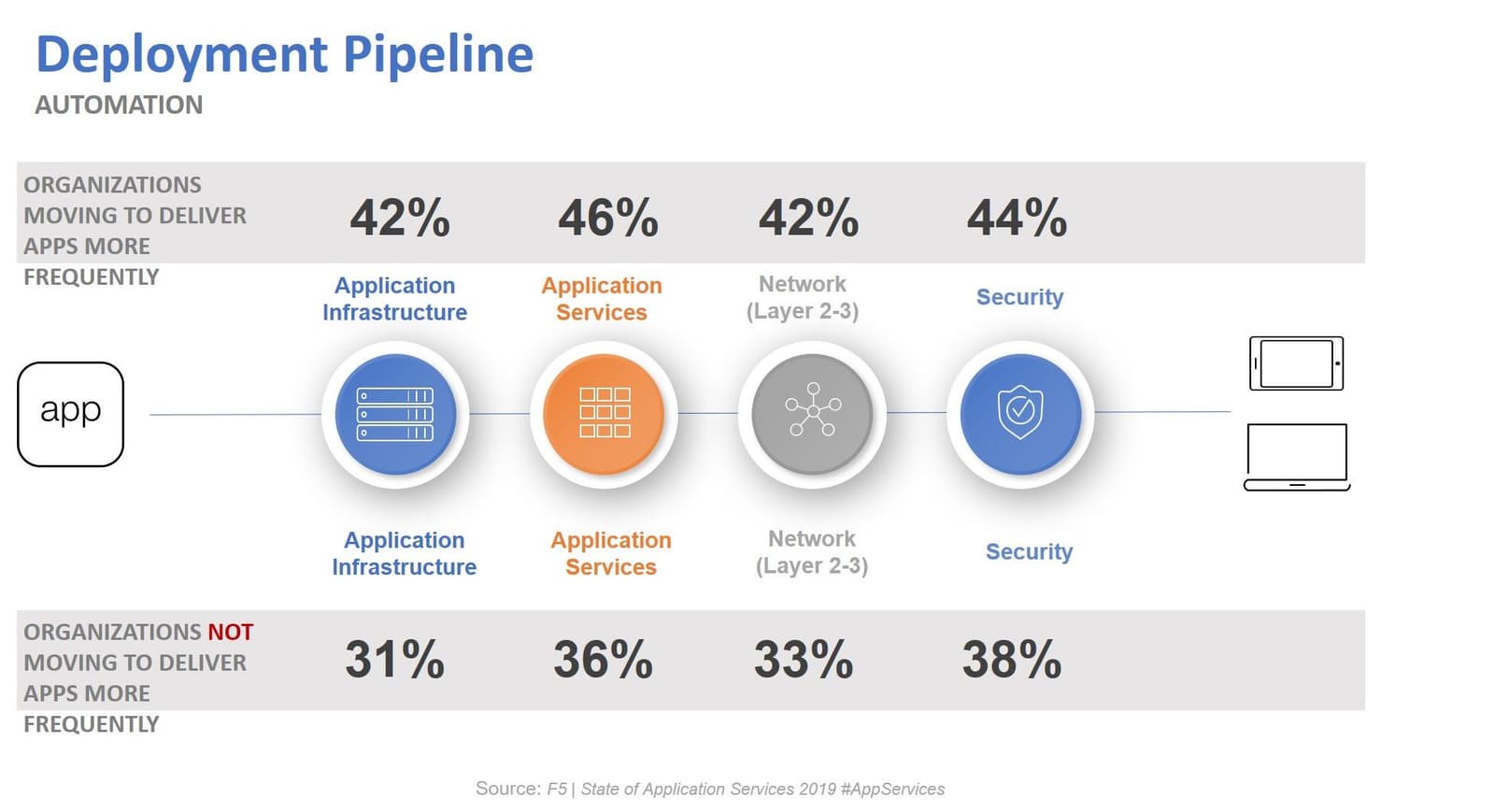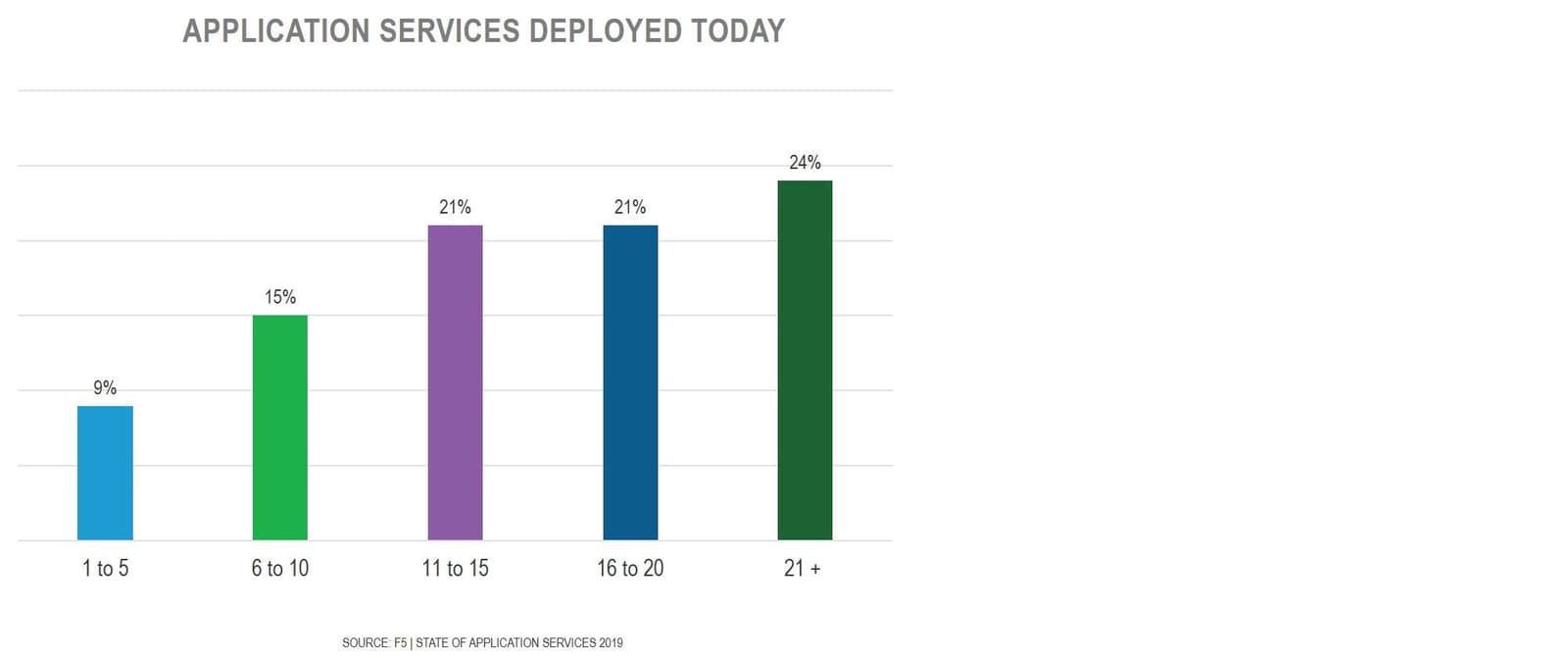For five years we have conducted research into the State of Application Delivery. This year, we've changed the name of our annual report to reflect a subtle but important change in focus across the world of IT. Namely, that the business of application delivery is really about the business of application services. The focus is no longer on the platform that delivers those services, it is on the services themselves. These are functions and tools that provide capabilities critical to successfully securing and scaling the most important asset a business has today: applications.
Diving into those application services alone is always interesting. But delving into the applications, environments, trends, and technology that drive organizations to use, on average, sixteen different applications services is more enlightening. It gives us a glimpse of what IT and business will look like in the next year.
Move over Cloud, Here Comes Data
What we see is the rise of data and its use to make decisions that propel productivity and profit as the most strategically significant trend for 2019. Big data analytics has surpassed cloud - in all its forms - for the first time in five years to take the crown as top strategic trend.

This doesn't mean cloud isn't important anymore. On the contrary, what we see is the natural movement of a technology into mainstream use. That observation is based on the 87% of respondents whose standard operating model is now multi-cloud. More than half (52%) of organizations are using two to six different cloud providers - excluding SaaS. One in five (20%) are using more than seven. Just about one in five (19%) are in the minority and have zero cloud usage either on-premises or in the public domain.
The focus of strategy, you see, is moving toward applications and the data it generates. Business has always been concerned with consumer trends and buying patterns. But never before has it had instant access to the data that describes them. The improvements in compute and storage speed have given rise to the ability to leverage machine learning and data science in ways only academia could envision just a few years ago. This trending strategic importance of data is likely to continue as the focus moves from where to deploy applications toward how to take advantage of the data they generate.
Applications Driving Decisions
That applications and their data are at the center of the IT and business universe can be seen in the way the application drives deployment location decisions. When an application is ready for deployment, nearly half of organizations (47%) choose a cloud based on the application's type. Forty-four (44%) consider what kind of end user will be accessing the application, and another 44% make the decision on a per-application basis.
Security, too, is driven by the type of application in question. Nearly half (47%) determine whether to protect an app with a web application firewall based on what type of application it is, e.g. collaboration, media, data management, user engagement. And nearly the same percentage - 46% - based protection of the app with a WAF on the sensitivity of the data the application will be working with.
On average, organizations are using three different security services to protect applications. Network firewalls remain the most popular with 84% of respondents. Access control comes in second at 70% with WAF close behind at 64% of respondents - a 7% gain over 2018.
It's not just cloud and security decisions that are driven by applications. Nearly half (48%) of respondents told us they were moving to deliver apps more frequently as a result of digital transformation. They weren't kidding. When we looked at deployment pipeline automation based on release velocity, the results showed a staggering difference.

Cloud, security, and even automation efforts are driven by applications because the business is embodied in those applications today.
And that business is clearly going digital. Digital transformation continues to be a force majeure on applications and by extension, operations and IT. It’s changing the way applications are developed, deployed, and delivered into production. There’s more microservices and containers, and a desire to move faster and deliver more frequently.
The State of Application Services 2019
Whenever applications change - whether architecture or deployment location - there is a Newtonian-like reaction in the way they are delivered. That means application services. We can see this impact in the meteoric rise of deployment of application services specifically supporting cloud-native and containerized applications.
Ingress control - a container-specific application service providing HTTP routing - debuted this year with nearly half (47%) of respondents deploying now and another 23% planning to deploy in the next twelve months. Service mesh - another container-specific technology - debuted with 20% deployed now and 22% planning to deploy in the next twelve months.
We still see security application services dominating the "Top 5 Deployed Today", but the "Top 5 To Be Deployed" remain consistently those application services enabling the shift to the digital economy. Organizations are still deploying, on average, 16 different application services, and plan to deploy an average of 7 application services over the next twelve months. Overall, application service deployment is robust. Forty-five (45%) percent of respondents have deployed sixteen or more, with 24% deploying more than 20 different application services.

There's a great deal more to explore inside the State of Application Services 2019. I'll leave you with some notable findings and encourage you to take a gander at the full report at your leisure.
- The digital economy is changing the entire landscape of applications.
With more than two-thirds of organizations are engaged in digital transformation initiatives, IT organizations are re-evaluating their structures, processes, and workflows. The importance of understanding and leveraging application data continues to increase, which means that enterprises are focusing on big data analysis, real-time threat analytics, and targeted public cloud strategies. - App-centric business requires a multi-cloud strategy.
Most organizations evaluate cloud decisions based on what environment is best for each application, an app-first methodology that leads to multi-cloud architectures for nearly 90% of respondents. Multi-cloud has evolved from an experiment to a strategic concern, while enforcing consistent security and ensuring reliable performance are still challenging for most organizations. - While the most popular application services remain consistent, changes are coming.
The top five application services currently deployed is similar to last year, but the list of services respondents are planning to deploy includes some newcomers. The rise of containers has boosted the deployment plans for SDN and API gateways, as well as service mesh, while respondents also report deploying some newly developed cloud-native app services to increase scalability. - Modern cross-functional teams drive continued growth in automation and orchestration.
Automating and orchestrating development and deployment pipelines helps organizations keep up with the rapid rate of change required for external-facing applications. With silos breaking down and cross-functional teams speeding innovation, organizations are standardizing on developer-oriented solutions to implement CI/CD practices throughout IT.
About the Author

Related Blog Posts

Nutanix and F5 expand successful partnership to Kubernetes
Nutanix and F5 have a shared vision of simplifying IT management. The two are joining forces for a Kubernetes service that is backed by F5 NGINX Plus.

AppViewX + F5: Automating and orchestrating app delivery
As an F5 ADSP Select partner, AppViewX works with F5 to deliver a centralized orchestration solution to manage app services across distributed environments.

Build a quantum-safe backbone for AI with F5 and NetApp
By deploying F5 and NetApp solutions, enterprises can meet the demands of AI workloads, while preparing for a quantum future.

F5 ADSP Partner Program streamlines adoption of F5 platform
The new F5 ADSP Partner Program creates a dynamic ecosystem that drives growth and success for our partners and customers.
F5 NGINX Gateway Fabric is a certified solution for Red Hat OpenShift
F5 collaborates with Red Hat to deliver a solution that combines the high-performance app delivery of F5 NGINX with Red Hat OpenShift’s enterprise Kubernetes capabilities.
Phishing Attacks Soar 220% During COVID-19 Peak as Cybercriminal Opportunism Intensifies
David Warburton, author of the F5 Labs 2020 Phishing and Fraud Report, describes how fraudsters are adapting to the pandemic and maps out the trends ahead in this video, with summary comments.
